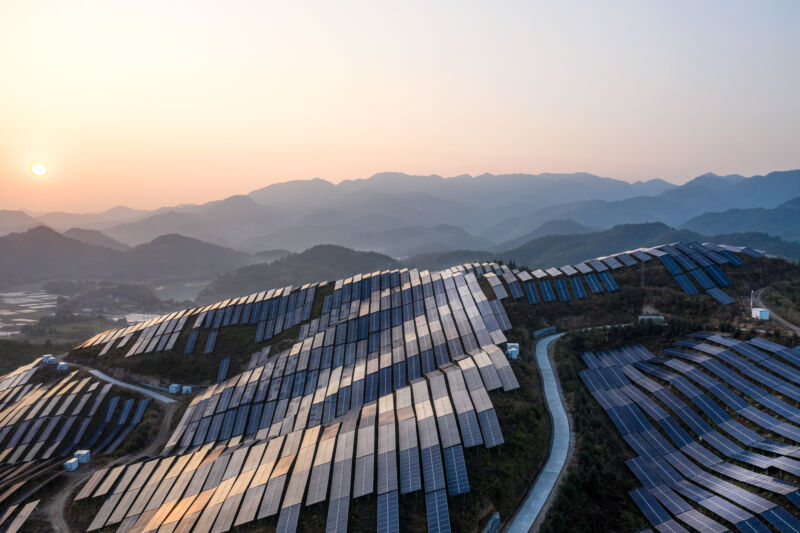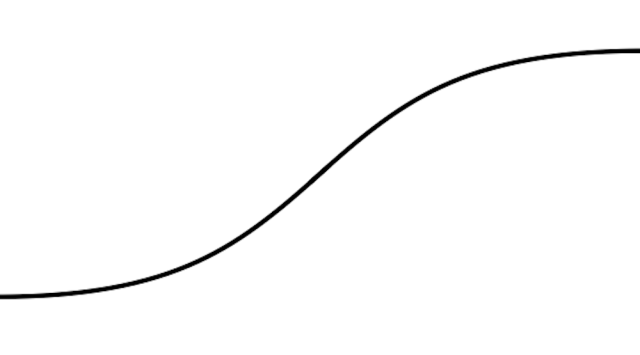A look at 60 countries shows that renewable growth rarely reaches the rates we need.
JOHN TIMMER - 7/20/2021

Researchers and policy analysts have checked and double-checked future climate scenarios. We know how much carbon dioxide we can emit and still keep the world from getting more than 2ºC warmer, and we can use that number to determine how quickly we need to move away from fossil fuels. We have a variety of routes to get there, most of them involving replacing fossil fuels with the cheapest renewable energy sources: wind and solar power. From there, it's a simple matter of determining how quickly wind and solar use have to increase to get us there.
Wind and solar have become the cheapest sources of new electricity in most countries, and we now have massive economies of scale for their production and installation. We also have decades of experience with managing them effectively. There's little reason to think that these renewables aren't poised for explosive growth.
And yet a new study of the history of renewables shows that only a handful of countries have seen that sort of growth. And even when those countries achieved their goals, they only did so for a brief period.
The S curve
A new paper in Nature Energy says that most technologies experience a predictable pattern of adoption. They start with a period of minimal growth, while the technology is expensive, poorly understood, and can't be manufactured at scale. Once a critical point is reached, adoption ramps up to a period of rapid acceleration, with each year seeing higher rates of growth. Over time, however, this increase slows, and the curve flattens out to an extended period of steady growth.

Enlarge / S curves show a period in which growth accelerates before tapering off and stabilizing. John Timmer
This is typically called an S-curve because if you plot growth over time, you get something that looks like a flattened-out S. There's a curve up to the period of the fastest increase, followed by a curve back toward the steady increase seen in a mature technology.
What does this have to do with climate goals? To reach these goals, countries need to get renewable power sources into the period of maximal growth as quickly as possible. But reaching maximal growth is not enough on its own—countries need to stay in the maximal growth phase for as long as possible to achieve a higher plateau when they start a period of stable growth. If we can't manage that, we'll need to look for other ways of hitting our emissions targets.
By now, enough countries have gone through growth and stabilization that the researchers felt they could determine whether sufficient increases are happening and, if so, what conditions enable them. They looked at data from 60 countries that collectively account for over 95 percent of the world's electricity production.
Hitting the accelerator
To start with, the researchers identified when countries entered the growth phase of either wind or solar, and they found that reaching a growth rate of 1 percent was a good marker. Many of those countries could be tracked into a period of maximal growth, and a number then saw growth slow down again, producing the full S curve.
As expected, the exact results varied by country and technology. Wind came down in price first, so most countries saw that technology take off about a decade earlier than solar. But solar became cheaper faster, and it's easier to manufacture at scale and requires less infrastructure to install. So its growth ramped up more rapidly.
Local conditions also mattered. Several countries, mostly in Northern Europe, saw wind take off but haven't seen a similar growth in solar. Others have seen only solar experience a period of rapid growth.
As of the most recent data (2018), there were 11 countries where growth was accelerating, and another 21 have seen three consecutive years of reduced growth, indicating that they had completed the S curve. Critically, the countries that started the acceleration phase later don't seem to hit faster growth rates, suggesting that maturing technology and the experience gained by early adopters don't make it any easier for the countries that adopt wind and solar later.
The researchers' analysis estimated that the median growth rate after the period of acceleration was about 0.8 percent of the countries' electrical supply for wind and 0.6 percent for solar. The highest growth rate was 1.8 percent of the electrical supply per year, and the largest countries rarely saw rates that exceeded 1 percent.
In a few cases, growth hit a plateau and took off again, but there were only three examples of that happening.
Is that fast enough?
The answer is a pretty clear "no." If we work backward from climate-stabilization scenarios, we'd need wind to roughly double its current rate, going from 0.6 percent to 1.2 percent. Based on the experience of several large countries, that would be the equivalent of reaching their maximum growth rate and then staying there. Solar would need to see its current global rate triple, with capacity additions equal to 1 percent of the electric supply every year. And both of those examples are based on the numbers for limiting climate change to 2ºC, when countries have agreed that 1.5ºC is a preferable goal.
As the authors of the paper put it, current scenarios that meet our climate goals require decades of growth in renewables at rates higher than those observed during the peak growth periods of most countries.
That's not to say it's impossible to boost growth rates to get things on track. Plenty of countries have seen growth in renewables despite haphazard or effectively absent policies. But if countries aren't in the process of improving their policy situation, they either need to start pursuing alternatives (like efficiency and carbon capture) or acknowledge that they don't actually intend to reach their commitments.
Nature Energy, 2021. DOI: 10.1038/s41560-021-00863-0 (About DOIs).
No comments:
Post a Comment